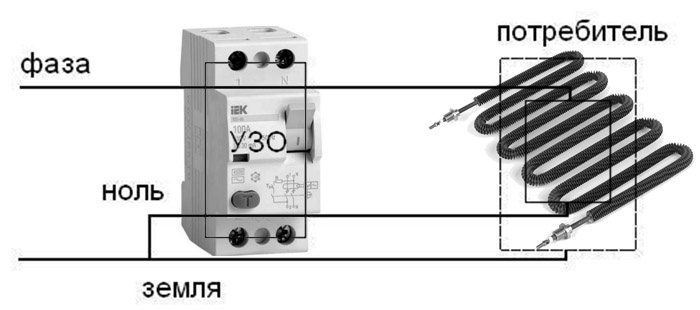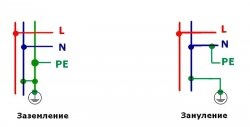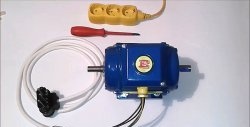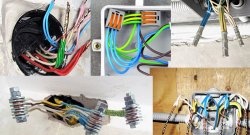Historically, it so happened that in the Russian Federation, as well as in border states, the grounding principle is used, when the neutral conductor is connected to the ground loop. Many people may have a “legitimate” question: if they are in contact with each other, then why pull so many wires - it’s enough to run a double wire everywhere (phase and zero line) and it will be possible to ground through the zero wire! However, this formulation of the question hides one technical nuance that turns this solution not only into a useless toy, but in some cases into a rather dangerous undertaking.

For those who are impatient and who like to “peek into the answer,” I will a priori tell you a “secret” - the fundamental idea is where the neutral wire is connected to ground. The option of connecting them directly inside the socket, connecting the grounding conductor (yellow-green wire) to the neutral conductor (blue wire), will not be correct. Such a grounding scheme will conflict with the requirements of the PUE. As a result, people will not be protected from electric shock; moreover, even more safety problems will be added.
The PUE, without any options, clearly states what the grounding conductor should be like. It must be a continuous wire, without any disconnecting elements - relays, fuses, switches, and also, for example, by disconnecting the electrical plug from the outlet.
Once this basic requirement stipulated in the PEU is violated, grounding from reliable protection of a person from electric shock turns into a useless fiction. But the problems, as theory teaches and practice shows, do not end there! If you still try to give the neutral wire grounding functions, then it is possible that the body of the refrigerator, microwave oven or other household appliances will be energized. This is explained by the fact that an electric current flows along the neutral wire with a corresponding voltage drop, the magnitude of which can be determined by multiplying the current strength by the conductor resistance in the interval between the measured location and the true grounding point. Moreover, the magnitude of such voltage can be characterized by tens of volts, that is, it can be dangerous for humans (at the limit - fatal!).

It remains to sum up some results and place emphasis. What is the fundamental difference between “zero” and “ground”? The fact is that current flows through the neutral wire and switches, the same input circuit breakers, are connected to it. That is, if we want to have “earth” in the form of a continuous vein, we must:
- in multi-storey apartment buildings: connect to a special earthen conductor in the electrical tunnel;
- for an individual residential cottage: the connection point should be the input circuit breaker, more precisely, its neutral wire at the input, which runs through the air or underground cable from the step-down transformer closest to the house, and the cross-section of the neutral wire should be at least ten square millimeters for copper wire and 16 mm2 – for an aluminum core (see the corresponding paragraph in the PUE).
Any other place behind the input machine cannot be used as a “ground”, therefore nothing, from metal blanks buried near the house to the body of the electrical panel itself, can be considered as such.
Never forget about the rules set out in the PES. According to them, you should be guided by an elementary but true rule: when you are not sure that this particular wire is “ground,” you should not connect anything to it except a 30 mA residual current device (RCD), which operates instantly, unlike a circuit breaker. As you know, God protects those who are careful!











